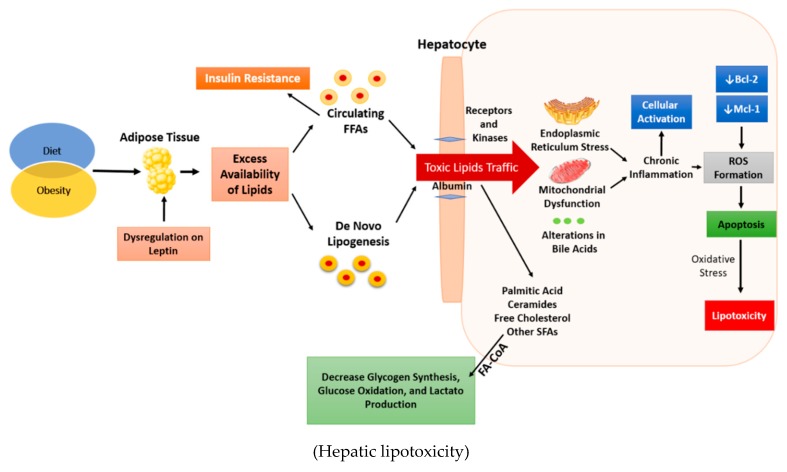Figure 2.
The increment in dietary energy availability and sedentary lifestyles leads to obesity. Obesity causes an excessive accumulation of lipids in the adipose tissue and in non-adipose tissue. Adipocytes provide a place to load and store energy in the form of triglycerides, protecting non-adipose tissues from immoderate accumulation of lipids because they have a restricted capacity to store triglycerides. This protection needs the permissive action of leptin, a hormone that decreases lipogenesis and increases oxidation in non-adipose tissue during acute overnutrition, dissipating the unnecessary energy of FFAs. The immoderate accumulation of FFAs exceeds the oxidative capacity of non-adipose tissues, thus potentiating the metabolic flux of fatty to other noxious non-oxidative pathways producing specially ceramides. The increment in FFAs increases tumor necrosis factor (TNF)-α, which promotes insulin resistance, and ROS, which trigger hepatocyte apoptosis. Also, SFAs induce endoplasmic reticulum stress, which leads to the upregulation of the pro-apoptotic BH3-only proteins (BIM and PUMA), resulting in inactivation of the antiapoptotic Bcl-2 family members (Mcl-1 and Bcl-xL). SFAs: saturated fatty acids, ROS: reactive oxygen species, FA-CoA: Fatty-acyl-CoA synthase, FFAs: free fatty acids.

